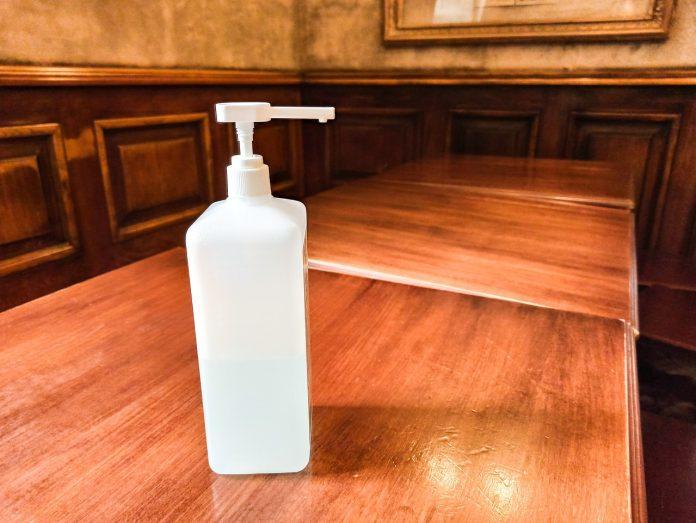Wounds can happen anytime, anywhere, and to anyone. Whether it’s a minor cut, scrape, or burn, it’s essential to take care of it properly to prevent infections. One of the most effective ways to do this is by using antiseptic creams. But what exactly are antiseptics, and how are they different from disinfectants? In this article, we’ll explore the differences between the two and the benefits of using antiseptic cream for wounds.
What are Antiseptics?
Antiseptics are chemicals that are used to kill or prevent the growth of microorganisms such as bacteria, viruses, and fungi. They are applied to living tissues such as skin or wounds and are generally safe to use. Antiseptics work by disrupting the cell membranes or metabolic processes of microorganisms, which can lead to their destruction.
What are Disinfectants?
Disinfectants, on the other hand, are chemicals that are used to kill microorganisms on inanimate objects such as floors, walls, and surfaces. Unlike antiseptics, disinfectants can be harsh and toxic to living tissues, and should never be applied directly to the skin or wounds.
What’s the Difference between Antiseptics and Disinfectants?
The main difference between antiseptics and disinfectants is the intended use. Antiseptics are used on living tissues to prevent infection, while disinfectants are used on non-living surfaces to kill microorganisms. Antiseptics are generally less harsh and less toxic than disinfectants.
Why Use Antiseptic Cream for Wounds?
Using antiseptic cream for wounds can help prevent infection and speed up the healing process. Antiseptics can kill bacteria and other microorganisms on the surface of the skin and inside the wound, reducing the risk of infection. Antiseptic creams can also provide a protective barrier over the wound, preventing dirt and other foreign objects from entering.
How to Use Antiseptic Cream for Wounds?
To use antiseptic cream for wounds, clean the affected area with soap and water and pat dry. Apply a small amount of antiseptic cream to the wound and surrounding area, covering it completely. Reapply the cream as needed, usually two to three times a day. Be sure to cover the wound with a sterile bandage to keep it clean and protected.
Top Antiseptic Creams for Wounds:
- Neosporin
- Polysporin
- Bacitracin
- Betadine
- Silver sulfadiazine
Conclusion:
Stay Safe and Protected Antiseptic creams are an essential tool in any first aid kit. By understanding the difference between antiseptics and disinfectants and how to use antiseptic cream properly, you can help prevent infections and keep your wounds clean and protected. Don’t forget to consult with a healthcare professional if your wound is deep, bleeding, or shows signs of infection. Stay safe and protected!
Faqs
Q. What are the benefits of using antiseptic cream for wounds?
A: Antiseptic cream can help prevent infection by killing bacteria and other microorganisms on the surface of the skin and inside the wound. It can also promote healing by keeping the wound clean and protected from dirt and other foreign objects.
Q: Can I use antiseptic cream on all types of wounds?
A: Antiseptic cream is generally safe to use on minor wounds such as cuts, scrapes, and burns. However, it may not be suitable for deep wounds, puncture wounds, or wounds with heavy bleeding. Always consult a healthcare professional for advice on the appropriate treatment for your wound.
Q: How often should I apply antiseptic cream to a wound?
A: You should apply antiseptic cream to a wound two to three times a day or as directed by your healthcare professional. It’s important to cover the wound with a sterile bandage to keep it clean and protected.
Q: Can I use antiseptic cream on my face?
A: It’s generally safe to use antiseptic cream on your face for minor wounds. However, avoid getting the cream in your eyes, nose, or mouth, and use a cream specifically designed for facial use.
Q: Are there any side effects of using antiseptic cream?
A: Antiseptic cream is generally safe to use, but some people may experience allergic reactions or skin irritation. If you experience any unusual symptoms, such as itching, redness, or swelling, stop using the cream and consult a healthcare professional.
Q: Can antiseptic cream be used as a substitute for medical treatment?
A: No, antiseptic cream is not a substitute for medical treatment. It’s important to seek medical attention if your wound is deep, bleeding, or shows signs of infection, such as pus or redness around the wound. Antiseptic cream is only meant to be used as a first aid measure to prevent infection and promote healing.
Q: Which antiseptic cream is best for wounds in India?
A: There are several antiseptic creams available in India that are effective for treating wounds. Some of the popular antiseptic creams are Betadine, Savlon, Dettol, and Soframycin. Each of these creams contains different active ingredients that work to prevent infection and promote healing. It’s important to consult a healthcare professional for advice on which cream is best suited for your specific wound
Q: Is antiseptic cream good for wounds?
A: Yes, antiseptic cream is good for wounds as it helps prevent infection and promote healing. The active ingredients in antiseptic cream work to kill bacteria and other microorganisms on the surface of the skin and inside the wound, which helps to reduce the risk of infection. Antiseptic cream can also help to keep the wound clean and protected from dirt and other foreign objects. However, it’s important to use antiseptic cream as directed and to seek medical attention if your wound is deep, bleeding or shows signs of infection.
